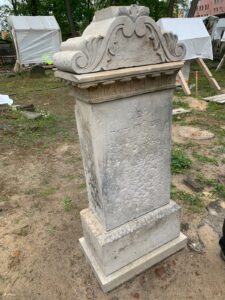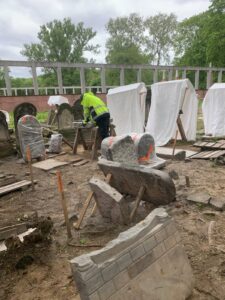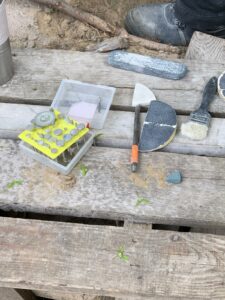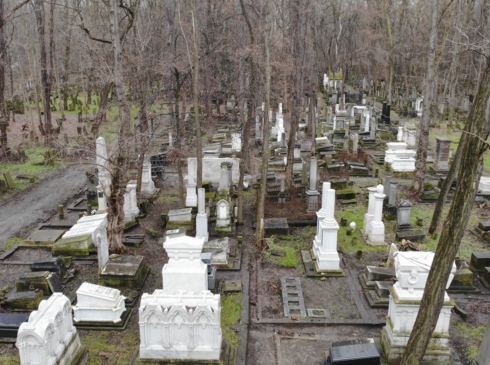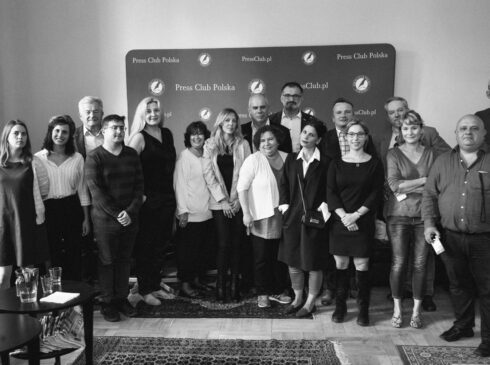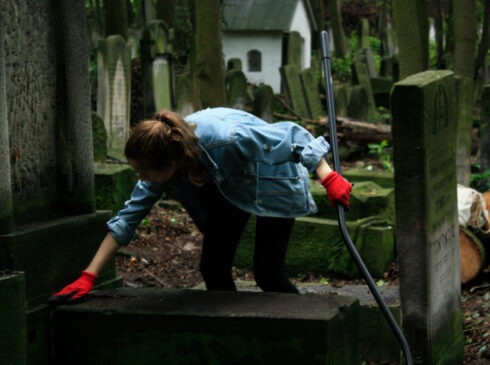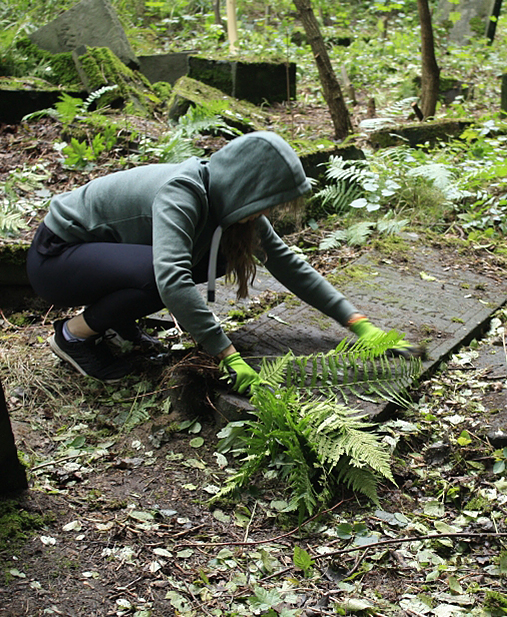Conservation techniques vs. challenges
At the end of April, a transition committee was held in section I with the participation of the works manager and the investor’s supervision inspector. In the oldest part of the Cemetery, work is underway on 40 tombstones. The facilities were cleansed and disinfected. After prior preparation, the objects were dismantled and taken from their places of original exhibition under the strict supervision of the Rabbinical Commission for Cemeteries. The dismantled parts were placed on special frames and the de-roofing places were marked and secured. The facilities were cleaned using various techniques and intensities adapted to the requirements. The cleaned tombstones were structurally strengthened. The challenge was to consolidate the monoliths stratified along the sedimentary layers. After substantive consultation, appropriate methods were selected.
Work progress as of April 22, 2024: 50%
Characteristics of the place
The Jewish cemetery at Okopowa Street in Warsaw is one of the most important memorial sites that reflects the rich history and culture of Jews in Poland. The tombstones there, especially those from the 18th and 19th centuries, are not only valuable monuments, but also a testimony to changing trends in sepulchral art. Sandstone, while beautiful, is a fragile and erosion-prone material, making the maintenance of these tombstones extremely urgent and difficult. Conservation work to preserve these valuable artifacts is essential to protect them from further damage. Thanks to the efforts of conservators and researchers, steps have already been taken to protect this heritage, such as cleaning up the area and conducting archaeological research, which is revealing more and more about the history and funerary art of this place.
Gravestones, as lasting symbols of memory of the deceased, have been an important cultural and historical element of many communities for centuries. In Poland, especially in areas with a rich history and tradition, you can find various forms of tombstones that not only serve as a place of memory, but also as works of art and crafts. Matzevot, traditional Jewish stone tombstones, are often decorated with symbolic motifs, such as the crown of life, the tree of life or blessing hands, which have a deep religious and cultural meaning. Monolithic structures, additionally supported from the back, ensure durability and stability, which is an expression of respect for the durability of the memory of the deceased.
Vertical compositions, consisting of several elements, often take the form of columns or decorative plinths, which can be richly decorated and express the individuality and social status of the deceased. Carved tablets, placed on solid bases, often contain inscriptions that are not only a record of the deceased’s personal details, but also a testimony to the skills and artistic aspirations of the stonemasons. Inscriptions, whether carved in relief or incised, serve as a lasting testament to an individual’s life and legacy, and are often accompanied by additional plaques made of various materials such as marble, with marks carved or made of lead, adding a layer of complexity and dignity to the monument .
Metal fences, which sometimes surround more elaborate gravestones, not only protect the resting place, but also mark a space that is exclusively dedicated to the memory of the deceased, emphasizing his personal and familial significance. Such fences can also have a decorative function, with finely carved patterns that further enrich the aesthetics of the place. All these elements together create a unique cemetery landscape, which is a reflection of the cultural and historical mosaic of a given region, and at the same time a place of reflection and reflection on the passing of time.
Polish cemeteries, with their wealth of gravestones, are testimony to deep respect for the past and concern for preserving the memory of those who have passed away. They are also a place where history intertwines with the present, and tombstone art continues its evolution, being at the same time a guardian of tradition and an innovation responding to contemporary needs and aesthetics.
_______________
The works are carried out with funds obtained from a grant from the Minister of Culture and National Heritage to the perpetual fund of the Cultural Heritage Foundation.
intended for work at the Jewish Cemetery at ul. Okopowa in Warsaw.
![]()



